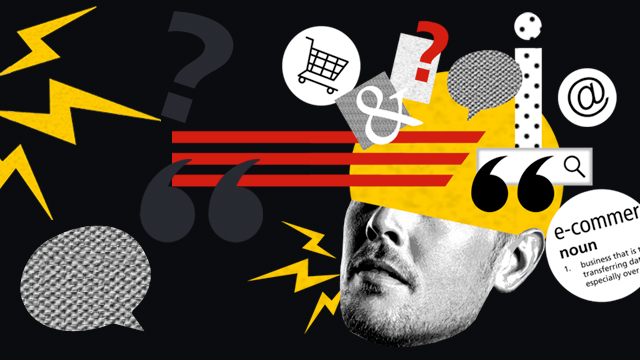Did you know that around 7 out of 10 e-commerce customers abandon their online carts without completing a purchase?1 Something as simple as a slow-loading webpage could see a potential customer give up in frustration and head to one of your competitors instead…
A report from Euromonitor International forecasts that consumers will spend a whopping US$11 trillion on goods and services online in 20242. To ensure your business gets a slice of this lucrative pie, follow our tips to optimise your e-commerce website.
15 ways to optimise your e-commerce website
1. Minimise page load time
Don’t fall at the first hurdle! Research shows that for every additional second your site takes to load, visitors’ response rates drop3. Compressing text and images, deleting unused plugins, and switching your web-host provider are some of the ways you can speed things up. Furthermore, a faster website will earn a place higher up Google’s search engine ranking list.
2. Hook them on the home page
Homepage design for e-commerce really counts. Your home page should be engaging and clearly communicate your brand’s main benefits. But don’t overdo it – a cluttered page will overwhelm customers who won’t know where to begin. Prioritise an easily found search bar and photos of some of your best-selling products to hook customers in. Oh, and keep annoying pop-ups to a minimum.
3. Improve your search box
Shoppers who use your website’s search feature are 3x more likely to see a purchase to conclusion4. You can enhance this even further with the help of Artificial Intelligence. AI-powered search tools can analyse users’ previous preferences to better understand their intent and deliver them highly personalised results.
4. Provide plenty of high-res images
If a customer knows exactly what they’re buying, they’ll be less likely to be disappointed and return it. Share lots of high-res photos on your website, and consider investing in AR/VR tools to showcase the product in more detail. Where relevant, you could also use video to demonstrate the product in use.
5. Consider offering free shipping
Free e-commerce shipping is a huge sales incentive for online customers. In DHL’s Global Online Shopper Survey, “free delivery” was cited by the majority of respondents as a leading way the online shopping experience could be improved. It is worth considering offering free shipping when a customer reaches a certain price in their basket. If you do offer this feature, be sure to shout about it on your homepage and on header banners across your website.
6. AI is your best customer experience manager
AI-powered chatbots can better understand and respond to customers’ queries, helping them to find what they’re looking for quickly. Chatbots powered by AI in e-commerce can analyse past purchasing behaviors to make product suggestions customers will like, and even upsell and cross-sell relevant products. They can offer post-sales support, too, around tracking and refunds. And, as chatbots are available 24/7, your customers will never be kept waiting.
7. Prioritise personalisation
Personalisation is one of the most important aspects to digital customer journeys – and to this end, AI is again invaluable. The technology can analyse large amounts of customer data such as preferences and behaviors, and then use these insights to create personalised customer journeys based on likely intent. It means, for example, that a new customer and a returning customer would both see a different version of your homepage when visiting your website; each tailored to their unique needs, with the effect of increasing conversions.
8. Include user reviews
Research from TrustPilot5 found that 89% of global consumers check reviews as part of their online buying journey, whilst 49% consider positive reviews one of their top three purchase influences. Share lots of customer reviews, ratings and testimonials on your website to build trust in your brand.
9. Stay secure
According to research by Baymard Institute6, 25% of online shoppers have abandoned a purchase because they didn’t trust the site with their credit card information. To reassure customers, be clear about your data protection policy, and obtain an SSL certificate (which authenticates your website's identity and enables an encrypted connection) to display.
10. Optimise for mobile traffic
In 2023, smartphones were responsible for generating two-thirds of online shopping orders7, so it’s crucial your site is optimised for mobile. This involves keeping content concise, and simplifying forms so that users don’t have to fill in so many details – remember, everything is smaller and fiddlier on a mobile screen which can get frustrating!
11. Be transparent on charges
No-one likes surprise extra charges at checkout. In fact, “unexpected shipping costs” is one of the leading reasons for e-commerce cart abandonment8. To counter this, be upfront about all charges (including any taxes and customs fees) throughout the purchasing journey.
12. Website localisation attracts cross-border customers
Selling internationally? Then be sure to adapt your website for each market. In DHL’s Global Online Shopper Survey, respondents cited the ability to see a website in their native language and prices in their own currency as two features that would encourage them to shop cross-border.
13. Offer different payment methods at checkout
In a Statista global survey, “payment options” (or a lack of them) was cited by 40% of online shoppers as a leading reason for cart abandonment9, so be sure to offer plenty of choice at checkout. From digital wallets to “Buy Now Pay Later” services, this guide will help you choose the best option(s) for your business.
14. Have a clear returns policy in place
Product returns – they’re a hassle, but you can’t hide from them. 67% of consumers will check an online retailer’s returns policy before committing to a purchase10, so it’s important to invest in this feature and be clear about it on your website.
15. Test, test and test
You can only optimise your e-commerce website by knowing where the weaknesses are. Google Analytics will help you understand important metrics like session duration, bounce rate and engagement so that you can make improvements. This should be an ongoing process – there’s always work to be done!
Once your e-commerce website is optimised, you’ll need a shipping partner to help you fulfil all the extra orders! As international experts, DHL Express can support you to reach customers across the world, seamlessly.




























